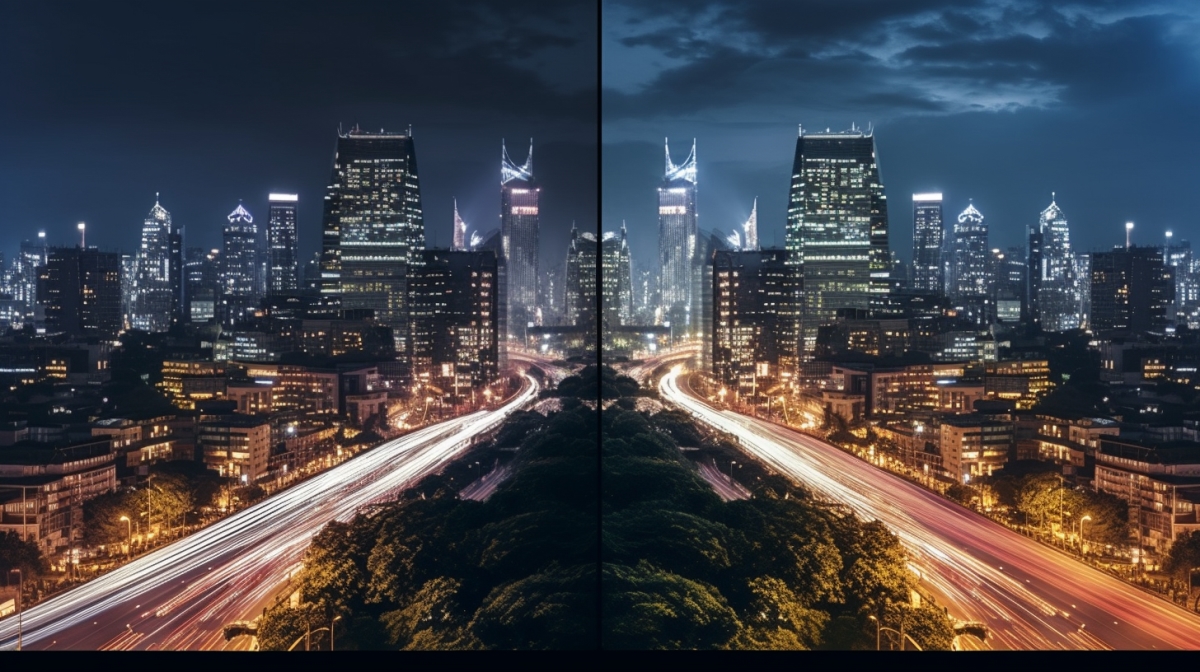


.png)

.png)
.png)
.png)













Creating great photos requires more than just capturing the right angle and perfect lighting; it also involves a significant amount of preparation and editing. With advancements in photo editing, both amateur and professional photographers can now easily access powerful tools to enhance their images. However, one of the most crucial aspects of photo editing, noise reduction, is still commonly misinterpreted.This article aims to clarify the concept of noise reduction in photo editing and explain its significance in producing high-quality images. By the end of this, you’ll discover how to effectively apply noise reduction in your upcoming photo editing projects.
When you take a photo, the camera's sensor captures the image by recording the light that hits it. In low-light conditions or when using high ISO settings, the sensor may capture random electrical signals in addition to the light signals. These random signals can appear as small dots or grains in the image, which is commonly known as "noise."

While some types of noise can add artistic effect or texture to a photo, excessive noise can make an image look unprofessional or lower in quality. This is where noise reduction comes in.The process of noise reduction involves using software tools to analyze the image and reduce or remove the unwanted noise while preserving the details and clarity of the image. This can be done manually or automatically, depending on the software used and the preferences of the product photo editor.Noise reduction algorithms typically work by analyzing neighboring pixels to determine if they are part of an image detail or part of the noise. If the algorithm determines that a pixel is noise, it reduces or removes it, while preserving the image details.Some photo editing software offers various levels of noise reduction, ranging from light to heavy, depending on the amount of noise in the image and the desired level of correction.
Noise reduction is an important tool for improving the quality of images and enhancing their visual impact. Here’s how this photo editing technique can have a significant impact on your photos:
Reducing noise in product image editing can help to make the image look cleaner and more professional, by removing a visual distortion that can make the image look grainy or speckled.
By reducing noise, you can bring out fine details in an image, especially in areas with low light, which can help to make the image appear sharper and more detailed. Makes prints look better: Reducing noise can make the print look cleaner and sharper, which is particularly important if you plan to sell your images or use them for commercial purposes.
Noise can reduce the dynamic range of an image, making it look flat and less vibrant. By reducing noise, you can help to restore the dynamic range and make the image look more lively.
Reducing noise can increase the range of editing options available to you, by making it easier to make fine adjustments to the exposure or color balance, which can be important for achieving the desired effect.
Reducing noise can help to reduce the file size of an image, which can be useful for sharing the image over the internet or if you have limited storage space on your computer or camera.
To achieve optimal noise reduction in your images, it is important to strike a balance between reducing noise and maintaining image quality and details. By following these recommended techniques, you can ensure that your images are of the best possible quality when rendered.
When you shoot at a high ISO, the camera sensor amplifies the signal, which can create noise in the image. In contrast, using a low ISO will result in a cleaner image, with less visible noise. However, sometimes it may not be possible to shoot at a low ISO, especially in low-light conditions. Therefore, the next practices can be helpful in reducing noise in such scenarios.
Most photo editing software has built-in noise reduction filters that can help you reduce the noise in your image. When applying the filter, you can adjust the strength and the radius of the filter to achieve the desired result. A radius that's too large can result in blurry edges and detail, while a radius that's too small may not be effective enough to remove the noise.
Before applying any noise reduction filter, always create a duplicate layer of your image. This way, you can easily compare the edited version with the original and make sure that you're not removing any details or colors from the image. If you're not satisfied with the edited version, you can always revert to the original.
Sharpening an image is a great way to enhance its details and make it look more polished. However, if you overdo it, it can accentuate noise in the image, making it look artificial and unrealistic. That said, make sure you're not over-sharpening the image, especially in areas with visible noise.
Sometimes, noise is more apparent in certain areas of the image, such as the shadows, highlights, or areas with a solid color. In such cases, applying noise reduction to the entire image may result in the loss of detail and sharpness. Instead, you can use a brush tool to apply noise reduction selectively to those areas where noise is most apparent.
Luminance noise is usually less noticeable than color noise and is perceived by the human eye as a grainy texture. Therefore, when applying noise reduction, start with a luminance noise reduction filter, and then proceed with a color noise reduction filter. This will help you maintain the image's natural colors while removing any noise that's visible in the image.
If the built-in noise reduction filters in your photo editing software are not sufficient, you can try using third-party plugins that are specifically designed for noise reduction. These plugins often offer more advanced features, such as selective noise reduction, and can give you better results, especially for high-quality images.
Completely removing noise from an image may result in a loss of detail and can make the image look artificial. That means, the goal should be to reduce the noise to an acceptable level while still preserving the quality and detail of the image. Don't aim to eliminate all noise, but rather to make it less distracting and less apparent to the viewer. This will help maintain the natural look and feel of the image.
KDCI, a leading ecommerce service provider in the Philippines, knows that the right product image can make or break a sale. That's why we've perfected our process of helping businesses with our expert photo editing services. Our team of professional photo editors are committed to enhancing your product images, producing catalogs that grab consumer attention and resonate with repeat purchasers.We understand that consumers want to see clear and visually appealing images of your products, and that's exactly what we can provide. With our photo noise reduction service, we remove obstructions, blemishes, and other errors, so that your target market will have an improved understanding of your products, and a drive to take action.From fashion and lifestyle to electronics and technology, our team has the refined skills and experience necessary in handling high-volume product photo editing projects for businesses of all sizes. You can trust that our photo editors will provide high-quality work that meets your specifications and deadlines.Click the button below to learn more about our services and pricing plans.Contact Us